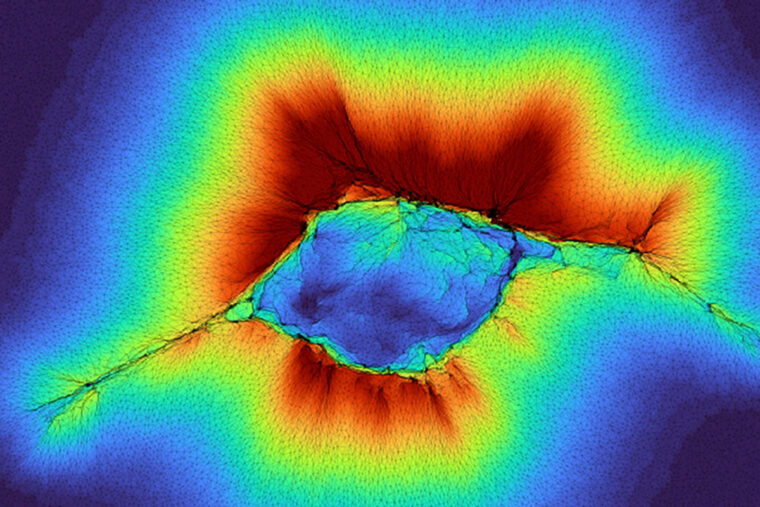
The tale of the princess and the pea illustrates an extraordinary sensitivity, a trait echoed in the biological world by certain cells. While cancer cells are known for their ability to sense their environment far beyond their immediate surroundings, new research reveals that normal cells can achieve a similar feat through collaboration.
Engineers at Washington University in St. Louis have published a study in the journal Proceedings of the National Academy of Sciences (PNAS) that sheds light on how cells can perceive beyond their direct environment. This research could enhance our understanding of cancer cell migration and identify potential targets to inhibit this process.
Understanding Depth Mechano-Sensing
Amit Pathak, a professor of mechanical engineering and materials science at the McKelvey School of Engineering, describes “depth mechano-sensing” as the mechanism by which cells detect stimuli beyond their immediate attachment. Previous studies by Pathak and his team found that abnormal cells with pronounced “front-rear polarity”—a characteristic of migrating cells—can sense up to 10 microns beyond their adhered environment.
This sensory capability is partly due to the cell’s ability to deform the surrounding fibrous collagen, allowing it to extend into the extracellular matrix (ECM) and “feel” the next layer, whether it is a hard tumor, soft tissue, or bone. The cell uses the stiffness of the ECM to navigate its path.
Collective Cell Sensing
The recent findings reveal that epithelial cells, which line the surfaces of tissues, can collectively sense their environment more effectively. Working together, these cells generate enough force to perceive through fibrous collagen layers as far as 100 microns away.
“Because it’s a collective of cells, they are generating higher forces,” said Pathak, who co-authored the study with PhD student Hongsheng Yu.
According to their models, this enhanced sensing occurs in two distinct phases: cell clustering and migration. The information gathered during these phases influences how cells migrate and disperse.
Implications for Cancer Research
The enhanced sensory abilities of cancer cells allow them to escape the tumor environment and evade detection, migrating freely even in softer tissues. Understanding the mechanisms behind this ability is the next step for researchers. Identifying the regulators that enable this extended sensing could provide new targets for cancer therapies. If cancer cells are unable to “feel” their way forward, their spread could be significantly curtailed.
This research not only advances our understanding of cellular behavior but also opens new avenues for therapeutic interventions aimed at controlling cancer cell migration.
Future Directions and Funding
Researchers are now focused on exploring how these sensory mechanisms operate and identifying specific regulators that facilitate this process. These regulators could become targets for novel cancer treatments, potentially limiting the spread of cancer by disrupting the cells’ ability to sense their environment.
Hongsheng Y, Pathak A. Emergent depth-mechanosensing of epithelial collectives regulates cell clustering and dispersal on layered matrices. PNAS, Sept. 11, 2025. DOI: https://doi.org/10.1073/pnas.2423875122
Funding for this research was provided by the National Institutes of Health (NIH) (R35GM128764) and the National Science Foundation, Civil, Mechanical and Manufacturing Innovation (2209684).





